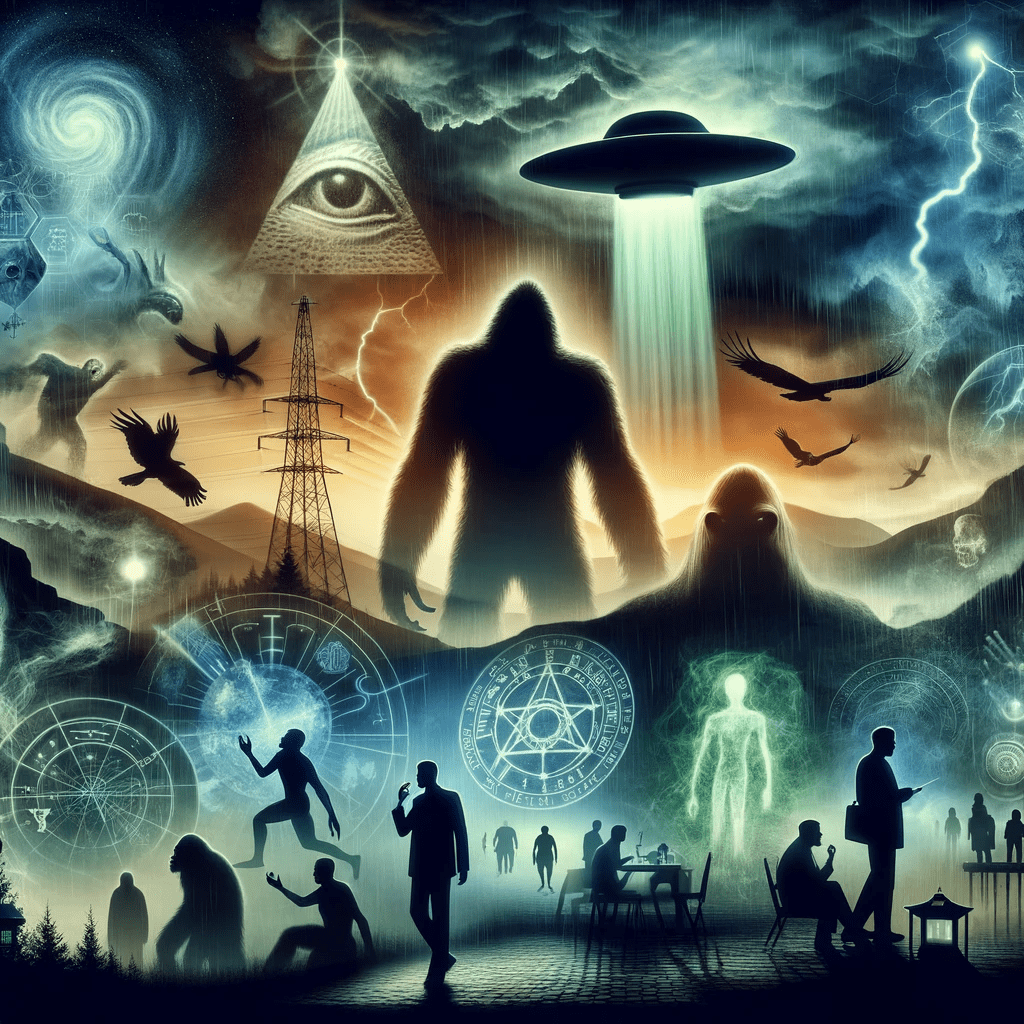Fortean Phenomena

Fortean phenomena, a term named after the American writer and researcher Charles Fort (1874-1932), encompass a broad range of unexplained, extraordinary, and often paranormal events. Charles Fort devoted much of his life to collecting newspaper accounts and stories about such strange occurrences, and his work is continued today by others who follow in his footsteps, sharing his interest in the unusual and unexplained.
Fort’s extensive research on anomalous phenomena led him to compile four large volumes published between 1919 and 1932: “The Book of the Damned,” “New Lands,” “Lo!,” and “Wild Talents.” Fort’s books explored a variety of odd happenings, including mysterious disappearances, UFO sightings, strange animal behaviors, and inexplicable meteorological events, among others. The idea underlying Fort’s work is that science does not have all the answers, and many phenomena exist that challenge our understanding of the world.
Interestingly, despite the often extraordinary nature of Fortean phenomena, some mainstream scientific perspectives are more open to their study than one might initially expect. For instance, psychologist and researcher Dr. David Luke, a senior lecturer at the University of Greenwich, has conducted serious studies on exceptional human experiences, anomalistic psychology, and altered states of consciousness. In an interview with “The Guardian” in 2011, Dr. Luke affirmed that such unusual phenomena deserve rigorous scientific investigation to increase our understanding of the human mind and its relation to reality.
Another prominent figure in the field is Dr. Jacques Vallée, a computer scientist, venture capitalist, and author who has long researched UFO sightings and related phenomena. Vallée, who is known for promoting the interdimensional hypothesis of UFOs, asserts that these strange encounters could be interactions with non-human intelligence from other realities or dimensions. His books, such as “Passport to Magonia: From Folklore to Flying Saucers,” have had significant influence on the field of UFOlogy and are frequently cited by those interested in Fortean phenomena.
Three intriguing facts about Fortean phenomena include:
- Charles Fort spent much of his research time in the New York Public Library, going through newspapers and scientific journals to document inexplicable events. His meticulous work led him to compile some 60,000 notes (source: The Fortean Times).
- The University of Maryland maintains a digital archive of Charles Fort’s notes and writings, testament to the cultural and historical value of his research into anomalous phenomena (source: University of Maryland Libraries).
- There’s an organization called the Fortean Society, originally founded by writer Tiffany Thayer in 1931 with Charles Fort as its honorary president. This society, later evolved into INFO (International Fortean Organization), continues to explore and document Fortean phenomena (source: INFO).
They range from sightings of unidentified flying objects and cryptids to unusual weather events and spontaneous human combustion. Despite the seemingly improbable nature of these phenomena, some academics and scientists believe they are worth investigating, as they may offer fresh insights into our understanding of reality, consciousness, and the natural world.
Here are some of the more commonly discussed types of Fortean phenomena:
- UFOs and Aliens: Unidentified flying objects and encounters with purported extraterrestrial beings. These can range from sightings of unusual objects in the sky to claims of abductions and encounters with alien entities.
- Cryptids: Creatures whose existence is unproven, often due to lack of physical evidence. Examples include the Loch Ness Monster, Bigfoot, the Chupacabra, and the Yeti.
- Ghost Sightings: Encounters with apparitions or entities believed to be the spirits of deceased individuals.
- Poltergeist Activity: Phenomena allegedly caused by a disruptive spirit or ghost, such as unexplained noises, objects moving by themselves, or other unexplained physical disturbances.
- Spontaneous Human Combustion: The alleged phenomenon where a person catches fire due to a chemical reaction within the body, with no obvious external source of ignition.
- Bermuda Triangle Mysteries: The area of sea between Miami, Bermuda, and Puerto Rico known for unexplained disappearances of ships and planes.
- Anomalous Weather Phenomena: Unusual or unexplained weather events, like raining animals or colored rain.
- Out-of-place Artifacts (OOPArts): Artifacts of historical, archaeological, or paleontological interest found in an unusual or seemingly impossible context that challenges conventional historical chronology.
- Cattle Mutilation: The unexplained killing and mutilation of cattle under abnormal circumstances. The surgical precision and the absence of blood or tracks have led to speculation about extraterrestrial involvement.
- Time Slips: Instances where a person or group of people allegedly travel through time via unknown means, often involuntarily.
- Miracle Healings: Unexplained medical recoveries or improvements attributed to divine intervention or other supernatural phenomena.
- Mysterious Disappearances: Instances where people vanish under strange and often inexplicable circumstances, sometimes without leaving a trace.
- Crop Circles: Patterns created by the flattening of a crop. While many are man-made, some attribute certain crop circles to extraterrestrial activity or other unexplained forces.
- Teleportation and Levitation: Instances of individuals or objects moving from one place to another instantaneously, or floating off the ground, without any apparent physical means.
- Paranormal Abilities: Extraordinary abilities that defy natural laws, such as telekinesis (moving objects with the mind), clairvoyance (gaining information about an object, person, location, or event through extrasensory perception), and precognition (foreseeing future events).
Fortean phenomena’s enduring allure lies in their ability to challenge our preconceptions, prompting us to question what we think we know about the world. In a sense, they represent the ever-present human fascination with the unknown, the mysterious, and the unexplained.


